C-Arm Guidance in Medical Imaging: A Detailed Analysis
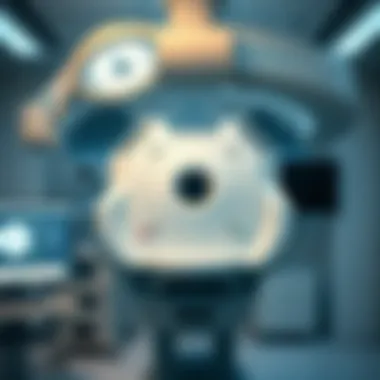
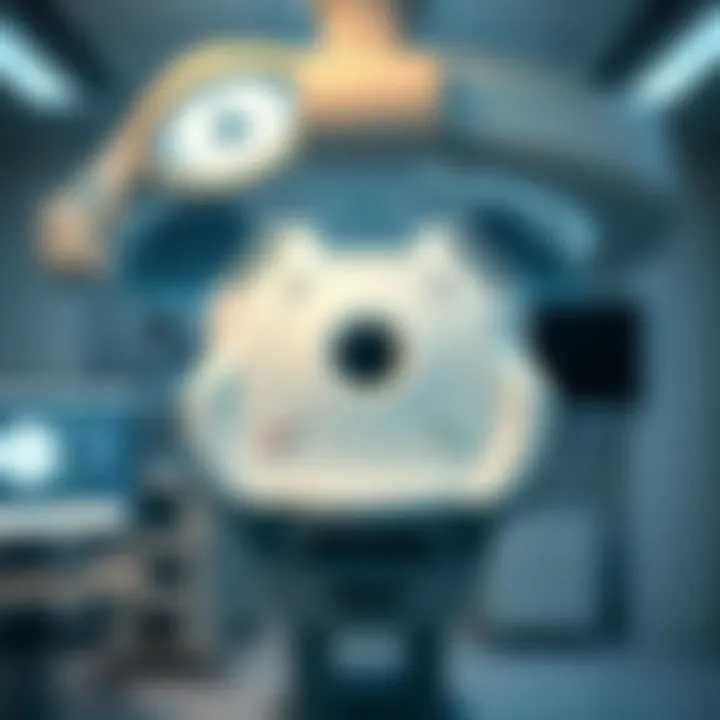
Intro
C-arm technology has reshaped the landscape of medical imaging, offering a versatile platform that assists in a variety of diagnostic and therapeutic procedures. This imaging modality, characterized by its distinctive C-shaped arm, allows healthcare professionals to explore anatomical structures in real-time with remarkable precision. As hospitals and surgical centers continue to embrace this technology, the implications for surgical outcomes and patient safety have become increasingly significant.
Understanding the evolution of C-arm guidance is crucial for both practitioners and students alike. This article delves into the intricate details of C-arm technology, from its historical context to the modern advancements that have propelled it to the forefront of medical imaging. We will explore the various applications of C-arms in surgical settings, assess their operational mechanisms, and evaluate both the benefits and limitations they present in clinical practice.
Prelude to C-Arm Guidance
In recent years, C-Arm guidance has emerged as a revolutionary element in medical imaging, enhancing procedures across various specialties. Its significance lies not just in its ability to provide real-time imaging but also in the precision and confidence it offers practitioners during intricate surgeries. This technology is paramount in settings such as orthopedic surgery, interventional radiology, and even cardiac procedures. Surgeons rely heavily on the supportive visual feedback C-Arm units provide, making them indispensable in complex medical environments.
Definition of C-Arm Guidance
C-Arm guidance refers to the use of a mobile fluoroscopy system, shaped like the letter "C," to produce high-quality images of patients during surgical and diagnostic procedures. This apparatus typically features an X-ray source and a detector arranged in a C-formation; its ability to rotate around the patient allows comprehensive imaging from multiple angles without repositioning the subject. This functionality can greatly improve the accuracy of procedures, as it offers a three-dimensional perspective of anatomical structures and potential pathologies.
Historical Context and Development
The development of C-Arm technology can be traced back to the mid-20th century, coinciding with advancements in radiography. Early machines were bulky and limited in functionality, but as technology progressed, so did the capabilities of C-Arm systems. Initially, these devices found applications primarily in orthopedics and trauma cases; however, their versatility quickly led to broader usage in various other medical fields. The continual improvement in image processing has further fueled the enhancement of these systems, leading to sharper contrasts and reduced radiation exposure.
Today, manufacturers like Siemens and GE Healthcare continually innovate to keep pace with the growing demands in the medical field. Utilizing digital imaging technologies, modern C-Arms now deliver high-resolution images with minimal radiation, making them safer for both patients and practitioners. As such, they hold a crucial place in contemporary medical imaging, driving further research and application in clinical settings.
Technical Components of C-Arm Systems
C-Arm systems are a cornerstone of modern medical imaging, serving not just as imaging devices, but as integral partners in the surgical theater. The technical components of these systems are crucial as they directly impact the quality of the images produced and the effectiveness of the procedures themselves. Understanding these elements can provide insights into how they enhance surgical accuracy and patient safety.
Key Hardware Elements
At the heart of every C-Arm system are its key hardware elements: the X-ray tube, image intensifier, and the flat panel detector. Each component plays a distinct role that contributes to the overall functionality.
- X-ray Tube: This essential device generates X-rays directed at the patient's anatomy. The efficiency and design of the X-ray tube can influence the level of radiation exposure during imaging. High-quality tubes can operate at various energy levels, promoting better image clarity.
- Image Intensifier: This component converts X-ray photons into visible light images, amplifying the signal for better visualization. It enhances the contrast and reduces noise, crucial for clarity, especially in dynamic procedures, such as joint surgeries.
- Flat Panel Detector: A newer technology component that provides higher resolution images than traditional systems. It captures images digitally, allowing for immediate access and manipulation by medical staff. This leads to faster decision-making in critical situations.
Understanding these hardware elements is vital as they constitute the backbone of imaging capabilities, ultimately affecting the outcomes of various procedures.
Image Processing Technologies
Image processing technologies integrated within C-Arm systems are indispensable for improving the quality of visual data. These technologies process real-time images, adjusting for various factors such as motion, contrast, and distortion. Here are a few key aspects:
- Real-Time Image Enhancement: Algorithms help in adjusting the brightness and contrast of images in real-time, giving surgeons clearer views during procedures.
- 3D Reconstructions: Advanced systems allow for the conversion of 2D images into 3D models. This innovation helps in pre-surgical planning and intraoperative navigation.
- DICOM Compatibility: The C-Arm systems need to adhere to DICOM standards, enabling seamless sharing and storage of imaging data across different devices and systems.
The processing capabilities directly affect how surgical teams interpret visual data, making technological proficiency a necessity rather than luxury in modern surgical settings.
Integration with Other Medical Devices
Finally, the integration of C-Arm systems with other medical devices is vital for creating a fully functional surgical environment. This integration allows for multi-modality imaging and enhances the versatility of procedures. Notable integrations include:
- Surgical Navigation Systems: These systems utilize imaging data from the C-Arm to guide tools during surgery. This intersection of technologies maximizes accuracy and minimizes complications.
- Patient Monitoring Equipment: Synchronization with devices that monitor vital signs ensures that surgeons are informed throughout procedures, providing real-time feedback that could be critical during interventions.
- Electronic Health Records (EHR): Connecting C-Arms to EHR systems optimizes workflow by allowing easy access to patient histories, previous imaging, and other pertinent information during surgical procedures.
Effective integration ensures comprehensive data availability, enhancing overall surgical outcomes. Thus, the interaction among these components signifies a stepped-up game in surgical analytics, pushing the boundaries of what's achievable in healthcare today.
Operational Mechanisms of C-Arm Guidance
Understanding the operational mechanisms of C-Arm guidance serves as a vital pillar in realizing its role in medical imaging and surgical applications. The function of C-Arm devices integrates optics, digital imaging, and real-time processing, delivering critical insight during medical procedures. It helps clinicians visualize internal structures and assists them in making informed decisions at the surgical site. By deciphering the intricate workings of C-Arm technology, we not only highlight its prowess in enhancing procedural accuracy but also underscore the benefits, potential limitations, and considerations that come into play during its utilization.
Imaging Techniques Employed
C-Arm systems utilize a variety of imaging techniques to ensure clear and precise visuals throughout surgical undertakings. The most common techniques employed include:
- Fluoroscopy: A dynamic imaging modality that provides real-time visualization of movement, this technique allows physicians to observe the movement of organs or the trajectory of instruments inside the body.
- Digital Radiography: This employs advanced digital sensors that provide immediate images with reduced radiation exposure compared to traditional radiographic techniques. The quick access to images enhances decision-making during surgeries.
- Contrast Imaging: Utilizing contrast agents enhances the visibility of internal structures, especially during vascular or gastrointestinal procedures. It allows for more detailed views that can be crucial for successful interventions.
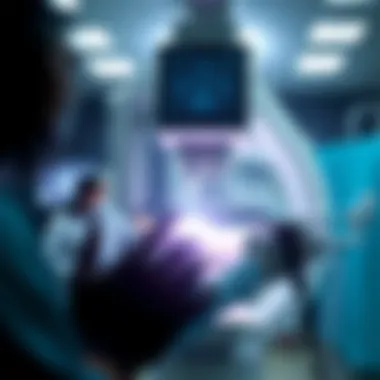
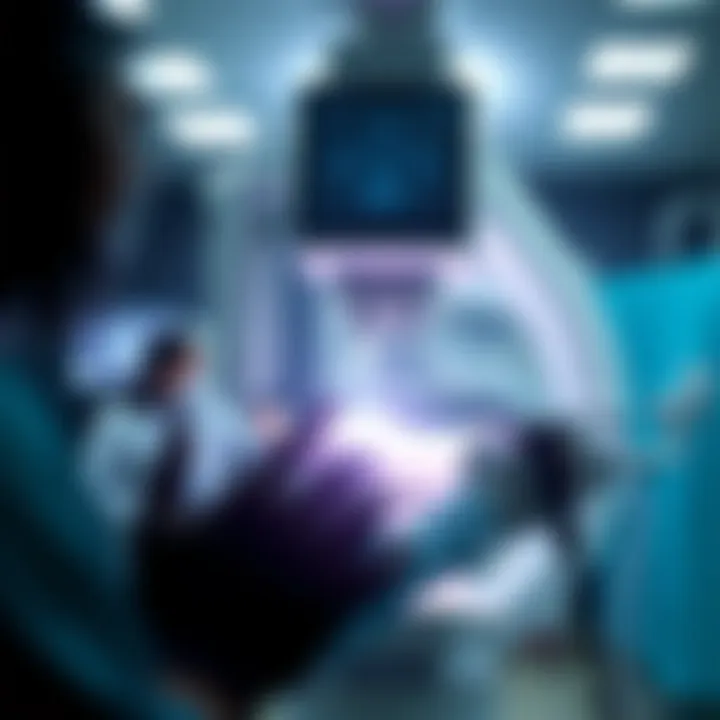
The choice of imaging technique often depends on the specific requirements of the procedure as well as patient factors. Each technique presents its own set of strengths, enabling surgeons to make precise interventions, which thus minimizes complications.
Workflow in Surgical Settings
The integration of C-Arm systems into surgical workflows has revolutionized operational procedures in diverse clinical settings. The workflow typically involves the following phases:
- Pre-operative Setup: Initially, the medical team must calibrate the C-Arm device to ensure optimal settings. This includes positioning the C-Arm at an appropriate angle and distance to the surgical area for the best imaging results.
- Intra-operative Imaging: During the procedure, the C-Arm continuously emits X-rays and captures images in real-time. Surgeon guidance is amplified through instant feedback, enhancing clarity and visibility throughout the operation.
- Post-operative Review: After the surgery, captured images are often reviewed to assess the procedural outcomes. Documenting the progress or any complications encountered ensures comprehensive post-operative patient care and aids future planning.
Operational dynamics are often dictated by existing protocols and procedural standards, which vary across institutions. Ensuring efficient workflow not only contributes to successful surgical outcomes but also supports patient safety by enhancing the effectiveness of C-Arm-guided interventions.
Applications of C-Arm Guidance
C-Arm guidance has transcended its initial role in medical imaging to become a cornerstone in various critical applications, fundamentally enhancing both surgical and diagnostic workflows. The versatility of C-Arms allows for their deployment across an array of specialties, from orthopedics to interventional radiology. Understanding these applications is vital for healthcare professionals aiming to leverage state-of-the-art imaging technology in their practice.
Orthopedic Surgery
In orthopedic surgery, precision is paramount. C-Arm imaging facilitates this needed accuracy during procedures such as fracture fixing and joint replacements. A surgeon can view live images of the bones in real-time while executing intricate maneuvers. This capability significantly reduces the chances of misalignment or surgical errors, ensuring that implants are correctly positioned—essentially, it helps to get the lay of the land, so to speak.
The use of C-Arms minimizes the need for open surgeries, allowing for minimally invasive procedures that shorten recovery times. Surgeons can venture into complex areas of the musculoskeletal system without the major trauma associated with traditional methods. The result? Faster patient recovery and less overall healthcare costs. Such benefits have made C-Arm systems ubiquitous in hospitals and surgical centers.
Interventional Radiology
Interventional radiology is another field that has reaped the benefits of C-Arm guidance. This specialized domain often requires precise imaging for delicate procedures like biopsies or catheter placements. With C-Arms, radiologists can visualize vascular pathways and tissue structures, making it easier to perform complex interventions under real-time imaging.
Key Benefits of C-Arm in Interventional Radiology:
- Enhanced Visualization: Provides detailed images of internal organs, aiding in accurate diagnoses.
- Real-Time Monitoring: Allows continuous feedback during procedures, reducing the risk of complications.
- Increased Safety: Enables safer access to hard-to-reach areas of the body, lowering the exposure to unnecessary risks.
This technology not only elevates procedural success rates but also enhances patient safety, underscoring the importance of integrating C-Arm systems into radiological practice.
Cardiac Interventions
C-Arm guidance has established itself as a vital tool in cardiac interventions as well. The precision and immediacy it provides are essential for procedures like angioplasties and the placement of stents. For cardiologists, having access to real-time images allows them to navigate the intricacies of coronary arteries effortlessly.
Moreover, during valve replacements or transcatheter aortic valve replacements (TAVR), C-Arms offer crucial insights into the positioning of devices, ensuring they are deployed correctly on the first try. This careful monitoring can be the difference between success and complication.
Pain Management Procedures
Pain management procedures have greatly benefited from the integration of C-Arm guidance as well. The accuracy of placements such as epidural injections or nerve blocks directly impacts patient outcomes. C-Arm systems help practitioners to gauge precise locations for injections, ensuring that they target the areas of pain effectively.
Utilizing C-Arms in pain management not only alleviates discomfort but enhances the overall efficacy of treatments, offering patients a better chance for lasting relief.
In summary, the applications of C-Arm guidance are rich and varied. From orthopedic surgeries to cardiac interventions, this technology fosters a new era of precision in medical practice. Healthcare professionals must stay abreast of these developments to fully harness the benefits that C-Arm imaging brings to the table. This ensures the evolution of care standards and ultimately leads to improved patient outcomes across the board.
Advantages of C-Arm Guidance
C-Arm guidance has significantly transformed medical imaging and surgical procedures, offering myriad advantages that enhance the overall effectiveness of healthcare delivery. As medical professionals strive for improved patient outcomes, understanding these advantages becomes paramount. In this section, we will delve deeper into the key benefits that underscore the importance of C-Arm technology in contemporary medical practice.
Enhanced Precision in Procedures
One of the most notable advantages of C-Arm guidance is its ability to provide enhanced precision during surgical procedures. With real-time imaging, surgeons can visualize the exact positioning of their instruments relative to the patient’s anatomy. This capability is particularly beneficial in complex surgeries, where even a slight miscalculation can have significant consequences.
For example, in orthopedic surgery, the C-Arm allows orthopedic surgeons to precisely align screws and plates during fracture fixation. The ability to see the surgical site clearly and in real time aids in avoiding damage to surrounding tissues, reducing complications and ensuring better outcomes. The clarity offered by these imaging systems fosters a more confident and secure environment for medical professionals, greatly impacting their performance and efficiency.
Real-Time Imaging Capabilities
The real-time imaging capabilities of C-Arm systems are crucial to modern medical practice. This operational feature empowers healthcare professionals to monitor processes as they unfold. Imagine a scenario in interventional radiology where a physician is performing a biopsy. With the C-Arm, the physician can see the exact location of a lesion or tumor as they insert the needle, making adjustments in the moment if necessary.


Moreover, during procedures such as spinal surgery, live imaging allows for the immediate confirmation of placement of surgical tools. The elimination of any lag time between imaging and action reduces risks associated with surgery. Surgeons can instantly verify if they are targeting the right anatomical structures, which boosts the accuracy of interventions and can significantly cut down on the need for follow-up surgeries due to initial misalignments or errors.
Reduction in Surgical Time
The efficiency of C-Arm guidance goes hand-in-hand with a significant reduction in surgical time. Faster procedures not only benefit the healthcare provider in terms of workflow but also greatly enhance patient safety and recovery. By having immediate access to imaging data, surgical teams can proceed without delays. This is particularly relevant in emergency settings where time is of the essence.
In many cases, the integration of C-Arm technology has been linked to shorter operating room durations. For example, a study showed that orthopedic procedures with C-Arm guidance took substantially less time compared to those relying solely on traditional imaging methods. As a result, this reduction in surgery duration can lead to decreased anesthesia time for patients, a factor that is especially favorable for those who might be at higher risk from prolonged sedation.
In summary, C-Arm guidance not only increases the precision and accuracy of medical procedures but also contributes to time efficiency during surgeries, leading to enhanced patient safety and better overall outcomes. Its role in modern healthcare is increasingly vital as the demand for minimally invasive and effective surgical solutions grows.
By recognizing and leveraging these advantages, medical professionals can continue to refine their techniques and practices, ultimately enhancing patient care in diverse medical domains.
Limitations and Challenges
In the ever-evolving landscape of medical imaging, it’s crucial to recognize the limitations and challenges associated with C-arm guidance systems. While these devices have revolutionized several medical procedures, understanding their drawbacks is essential for developing effective utilization strategies and ensuring patient safety. By shining a light on these concerns, practitioners and researchers can navigate the complex terrain of C-arm technology with eyes wide open.
Radiation Exposure Concerns
Radiation exposure remains a significant concern in the realm of imaging technologies, and C-arm systems are no exception. During procedures utilizing these devices, patients may be subjected to varying levels of radiation, making it paramount to minimize exposure wherever possible. Over time, repeated exposure can lead to an increased risk of radiation-induced complications.
In surgical settings, the level of radiation exposure isn’t just a patient concern; it also affects medical staff. Surgeons, radiologists, and assistants often work in close proximity to the C-arm, making them equally vulnerable to radiation. To address these concerns, the implementation of protective measures, such as lead aprons and barriers, becomes essential.
According to the American College of Radiology, the key to mitigating radiation risks lies in the application of the ALARA principle—keeping radiation exposure As Low As Reasonably Achievable.
Encouraging training aimed at understanding radiation safety emphasizes the importance of vigilance in protecting both patients and healthcare professionals. Investing in technology that lowers radiation dosage while maintaining image quality can also be a forward-looking solution.
Cost Considerations
As with any innovation in the medical field, cost becomes a blatant hurdle in the adoption of C-arm systems. High initial investment costs for purchasing or leasing C-arm units can deter hospitals and clinics, especially smaller ones with tight budgets. Besides, ongoing maintenance and operational costs can add further strain on financial resources.
However, it's worthwhile to consider the potential return on investment. By enabling minimally invasive procedures, C-arms can shorten recovery times and minimize hospital stays, ultimately leading to cost savings that may offset initial expenditure. Moreover, employing such technology can enhance operational efficiency and improve patient outcomes, making it a worthwhile long-term investment.
Some medical institutions might temporize their decision-making by exploring financing options, grants, or partnerships that could alleviate financial burdens. Identifying viable funding sources may play a pivotal role in bridging gaps in access to this technology.
Compatibility Issues with Other Systems
One challenge that could remain an unwelcome guest at the table involves compatibility of C-arm systems with other existing medical devices. In many healthcare environments, various imaging tools are in constant use, such as MRI machines and CT scanners. If a C-arm system does not integrate seamlessly with these devices, it can complicate workflows and introduce potential errors in patient care.
Mismatched systems may lead to delays, as healthcare professionals scramble to interpret results from devices with incompatible software or data formats. Such disruptions not only extend procedure times but may also impact clinical decisions made during critical moments in surgery.
Searching for options that promote interoperability can be very rewarding. Manufacturers and healthcare providers must prioritize investing in systems that emphasize compatibility and provide adequate training on their use.
Thus, understanding and addressing these limitations is pivotal for growth in the realm of medical imaging. By thoughtfully examining radiation concerns, financial implications, and compatibility issues, medical professionals and institutions can better navigate the landscape while paving the way for effective, safe, and innovative practices in patient care.
Regulatory and Safety Standards
Regulatory and safety standards are the backbone that supports the integrity of C-Arm guidance in medical imaging. These standards ensure that the technology is not only effective but also safe for both patients and medical professionals. By adhering to these protocols, healthcare providers can minimize risks, maintain the quality of images, and improve patient safety in a myriad of procedures. Without these rules, the advancements in imaging technology could easily spiral into practices that jeopardize health standards.
FDA Guidelines
The Food and Drug Administration (FDA) plays a critical role in overseeing the safe and effective use of medical imaging devices such as C-Arms. The guidelines set forth by the FDA provide a framework for the assessment of new devices, ensuring they meet stringent safety and efficacy standards before they are introduced to the market. Among these guidelines are:
- Pre-market Approval (PMA): For devices that are deemed to present significant risks, PMA is required. This process ensures that the safety and effectiveness of the device have been thoroughly evaluated.
- 510(k) Pathway: Many C-Arm systems follow this route, which allows devices that are substantially equivalent to already approved machines to enter the market more quickly. However, they still undergo rigorous performance comparisons.
- Post-market Surveillance: Once these devices are in use, the FDA mandates ongoing monitoring to track any adverse events or potential risks associated with their use in clinical settings.
Adhering to FDA guidelines enhances the credibility of manufacturers and fosters trust among medical professionals and patients alike. This trust is paramount, as it enables healthcare teams to use C-Arms confidently, knowing they are compliant with federal safety expectations.
International Safety Protocols
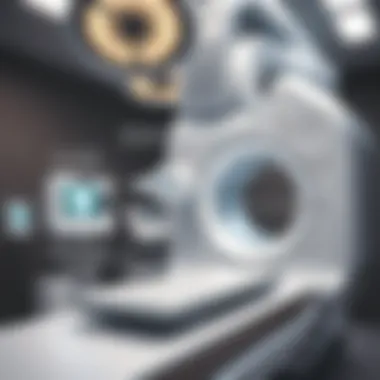
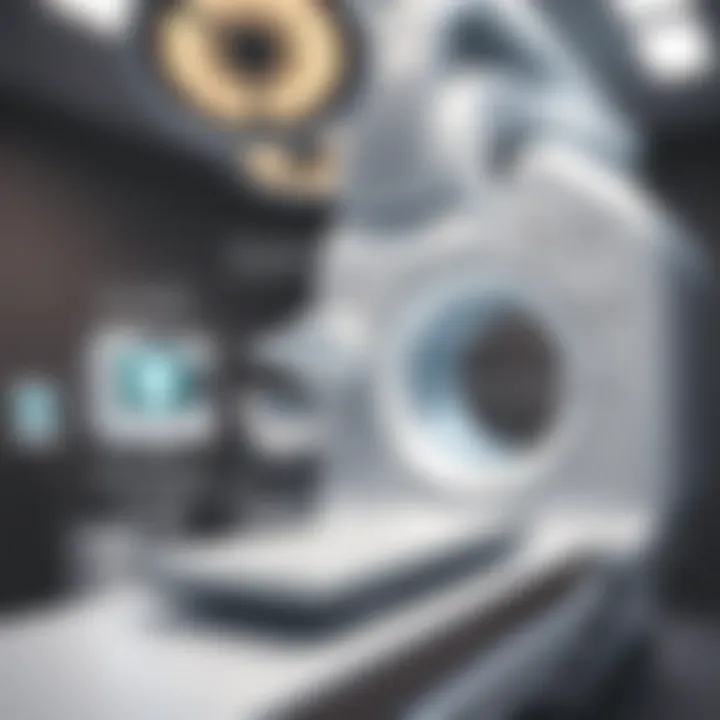
Beyond the FDA, international safety protocols serve as a crucial measure for assuring safe practices in C-Arm usage globally. Bodies like the International Organization for Standardization (ISO) and the International Electrotechnical Commission (IEC) have established global standards to guide manufacturers and health services in utilizing imaging technologies. Key protocols include:
- ISO 13485: This standard focuses on quality management systems for medical devices. It ensures a systematic approach to approach product realization, promoting consistent delivery of safe and effective medical devices.
- IEC 60601-1: This standard outlines the basic safety and essential performance requirements for medical electrical equipment, including C-Arms. It emphasizes electrical safety, mechanical safety, and performance reliability.
- Radiation Safety Protocols: Established protocols seek to minimize radiation exposure to patients and healthcare staff. Compliance with these protocols is mandatory and helps in mitigating the risk of radiation-induced injuries.
"Safety is not just a protocol; it is a culture embraced by an institution's commitment to its patients and staff."
Incorporating these international safety protocols into practice allows various countries and regions to standardize their use of C-Arms, fostering an environment of global patient safety. Failure to comply with established guidelines not only risks individual health outcomes but can also result in legal repercussions and reputational damage for medical institutions.
For more detailed information, please refer to resources from the FDA, ISO, and International Electrotechnical Commission.
Such measures are vital in navigating the complexities of medical imaging, ensuring that innovations do not compromise the well-being of patients or the confidence of healthcare providers.
Future Directions in C-Arm Guidance Technology
The landscape of C-arm guidance technology is on the brink of significant transformation. As innovations in medical imaging continue to emerge, it is essential to grasp these developments, as they usher in enhanced capabilities and improved outcomes for patients and healthcare professionals alike. This section delves into three pivotal areas that stand at the forefront of these advancements: Innovations in Imaging Techniques, Integration of AI and Machine Learning, and the Potential for Improved Patient Outcomes.
Innovations in Imaging Techniques
In recent years, imaging techniques have evolved, fostering a new wave of accuracy in procedural guidance. Novel advancements like high-definition flat panel detectors have improved image resolution, allowing for clear visualization of intricate structures. This is particularly beneficial in procedures such as spinal surgery or orthopedic interventions, where small margins can make a significant difference.
Additionally, the paradigm of real-time imaging is changing with the advent of mobile C-arms that provide comprehensive three-dimensional imaging. This three-dimensional capability can enhance planning and execution in complex procedures by enabling surgeons to visualize the anatomy from various angles without the cognitive load of imagining dimensions in their minds alone.
- Magnetic Resonance Imaging (MRI) Interfacing: The blending of C-arm imaging with MRI technology promises improved soft tissue visualization, which traditionally has been a challenge for X-ray-based modalities.
- Hybrid Imaging Systems: These systems integrate features from more than one imaging modality, providing better diagnostic information than single-modality imaging.
Integration of AI and Machine Learning
AI and machine learning have carved their niche across various sectors, and medical imaging is no exception. The introduction of AI-driven algorithms in C-arm systems can significantly reduce the workload on medical staff, allowing them to focus on clinical decision-making rather than technical image acquisition.
Machine learning algorithms can assist in image processing tasks, such as noise reduction or artifact correction, which ultimately contribute to more precise imaging outcomes. Furthermore, predictive analytics can identify trends from data generated during procedures, offering insights that help in refining both technique and patient management.
Some emerging applications include:
- Automated Image Enhancement: Algorithms that adaptively improve image quality based on pre-set criteria.
- Dynamic Workflow Optimization: AI can analyze workflows and suggest adjustments that enhance efficiency and reduce time wasted during procedures.
Potential for Improved Patient Outcomes
The ultimate goal of advancing C-arm guidance technology is to translate these innovations into improved patient care. A more accurate imaging solution directly correlates to reduced surgical times, lower complication rates, and consequently, improved patient recovery experiences. Patients subjected to procedures that use cutting-edge C-arm guidance often experience less trauma due to increased precision in targeting treatment areas—with some finding that they may even have shorter hospital stays.
- Enhanced Surgical Precision: Better imaging leads to more accurate placements of instruments or implants, minimizing collateral damage to surrounding tissues.
- Innovation in Post-Operative Care: Real-time imaging can assist in monitoring surgical outcomes right after interventions.
"The evolution in C-arm guidance is not just about technology; it's about enhancing the overall quality of patient care and surgical success rates."
In summary, the future directions of C-arm guidance technology showcase the potential for remarkable advancements in medical imaging that not only aid surgeons in their work but also elevate the patient experience. As technology hones in on key facets like imaging techniques, AI integration, and the timely delivery of accurate information, it heralds a promising era for healthcare.
For more on the implications of AI in healthcare, you can explore resources from HealthIT.gov.
Whether you're a student, researcher, educator, or professional in the healthcare domain, grasping these trends prepares you for what lies ahead in the medical imaging landscape.
The End
In wrapping up our exploration of C-Arm guidance in medical imaging, it’s essential to reflect on several key elements that highlight its vital role in contemporary healthcare. This technology, characterized by its portable imaging solutions, has transformed how medical professionals visualize complex anatomical structures during procedures.
Summation of Key Insights
C-Arm systems have become indispensable in various specialties, such as orthopedic surgery and interventional radiology. Their ability to provide real-time imaging aids surgeons in accurately locating and targeting regions of interest. Additionally, the integration of advanced imaging techniques has led to improved accuracy and efficiency in procedures. Here’s a brief recap:
- Real-time Imaging: Allows for immediate feedback, essential during intricate procedures.
- Versatile Applications: While commonly seen in orthopedics, their use extends to various fields, including cardiac interventions and pain management.
- Safety Advancements: Regulatory frameworks, like those from the FDA, ensure that C-Arm systems are as safe as possible for both patients and healthcare providers.
"C-Arm guidance has effectively bridged the gap between diagnostic imaging and therapeutic intervention, enhancing the quality of patient care."
Final Thoughts on the Future of C-Arm Guidance
Looking ahead, the future of C-Arm technology seems promising, driven by innovations such as artificial intelligence and machine learning integration. Smart imaging solutions could potentially refine the quality of imaging, leading to further enhanced procedural outcomes. Imagine systems that not only assist in visualizing anatomy but also predict surgical outcomes based on historical data. This shift could reduce errors, minimize patient recovery time, and optimize surgical workflows.
Moreover, as healthcare continues to prioritize patient-centered care, the flexibility and usability of C-Arm systems will likely be pivotal in meeting evolving demands. As advancements in technology persist, C-Arm guidance will further solidify its standing as an integral part of modern medical practice. Looking at the horizon, there’s no telling how far this technology may go in reshaping the landscape of medical imaging and intervention.



